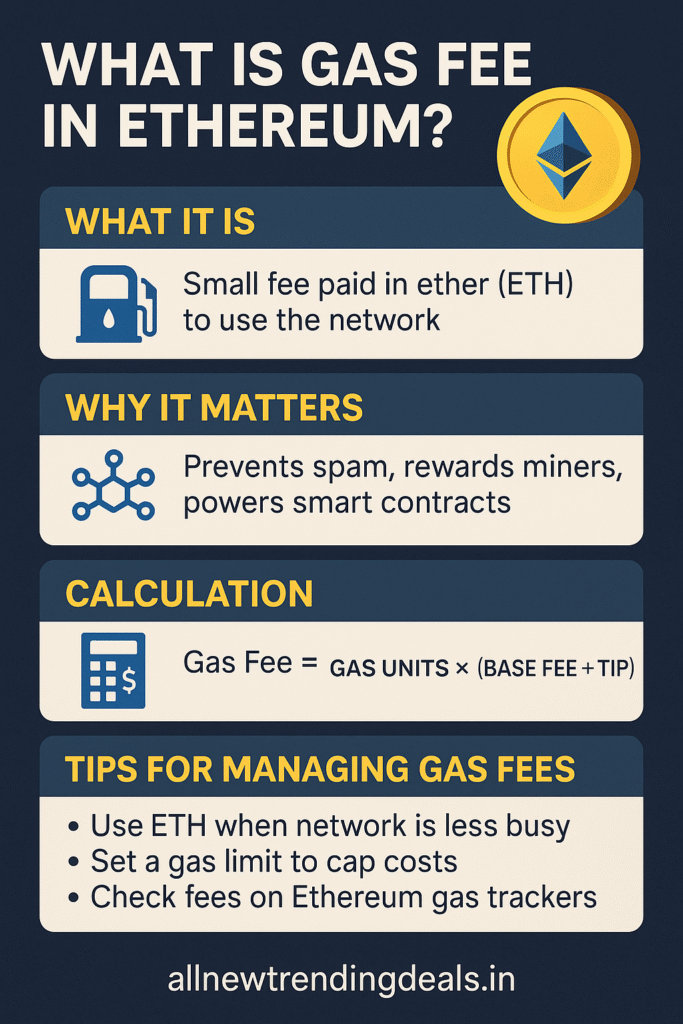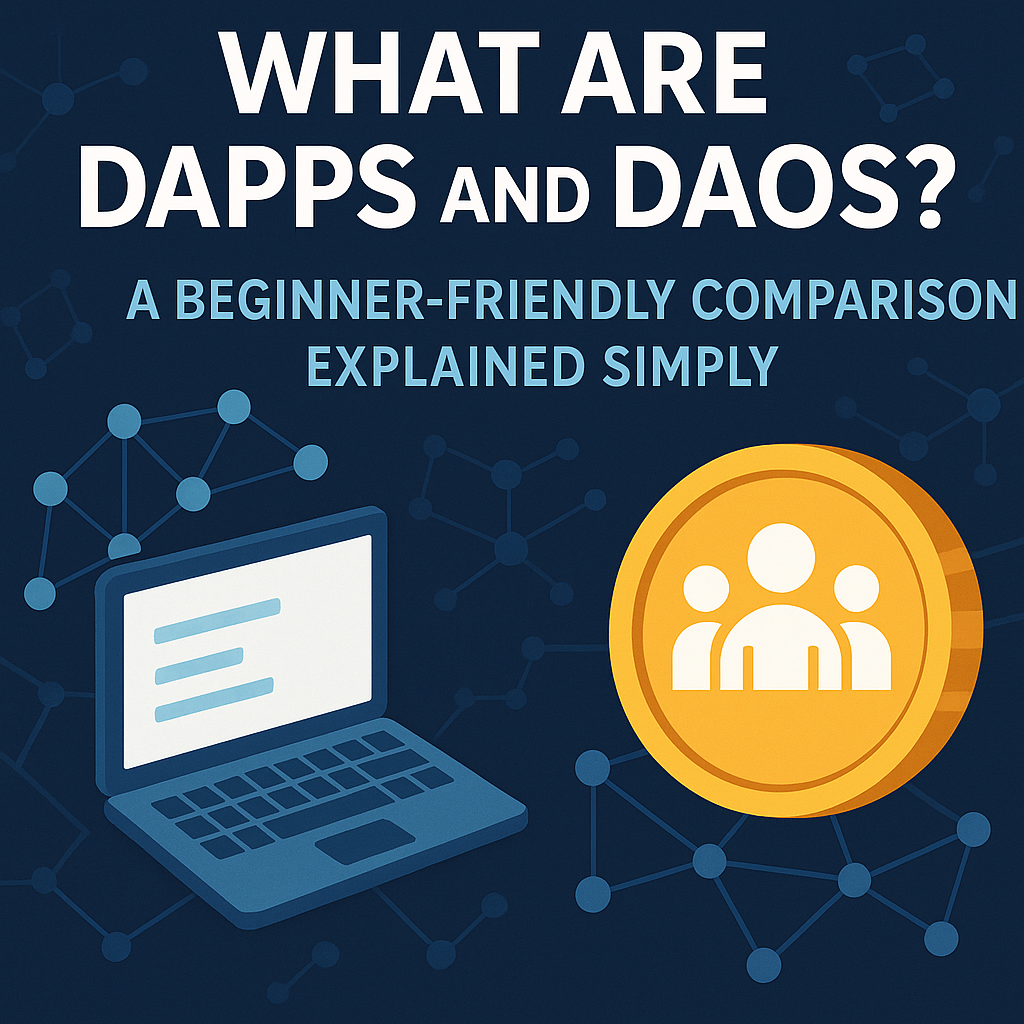
Gas fees are one of the most confusing yet important concepts in the Ethereum ecosystem. Whether you’re sending ETH, minting NFTs, or interacting with DeFi apps, you’ll encounter a gas fee. But what exactly is it, and why does it matter?
Let’s break it down in the simplest way possible.
🚀 What Is a Gas Fee?
A gas fee is the cost you pay to use the Ethereum network. Every transaction — like sending ETH or using a smart contract — uses some of the network’s computing power. This “fuel” is what we call gas.
🧠 Think of gas like paying a toll to use a road. The more complex your action, the higher the toll.
💡 Why Is It Called “Gas”?
Just like gas powers a car, gas in Ethereum powers transactions. It’s measured in Gwei, a small unit of ETH (like cents to a dollar).
1 ETH = 1,000,000,000 Gwei
🔎 What Determines Gas Fees?

Gas fees depend on three main things:
| Factor | Description | Effect on Fee |
|---|---|---|
| ⛓️ Network Demand | How busy the network is | More traffic = Higher fees |
| ⚙️ Transaction Complexity | Simple (send ETH) vs. Complex (DeFi swap) | Complex = More gas |
| 💵 Base Fee + Tip | Base fee auto-adjusts + user adds a tip | Higher tip = Faster |
🎯 Quote: “Gas is the lifeblood of the Ethereum blockchain.” — Vitalik Buterin, Ethereum co-founder
📊 Real Gas Fee Comparison Table
| Action Type | Estimated Gas Fee (in USD) |
|---|---|
| Sending ETH | $0.50 – $2.00 |
| Swapping tokens (Uniswap) | $5 – $20 |
| Minting an NFT | $10 – $100+ |
| Deploying a smart contract | $50 – $200+ |
ℹ️ These vary daily. Check current gas prices at Etherscan Gas Tracker
⚖️ Ethereum Gas Fee vs Other Blockchains
| Blockchain | Avg. Fee | Speed | Notes |
|---|---|---|---|
| Ethereum | High ($3–$20) | Slower | Most decentralized & secure |
| Polygon | Very Low ($0.01) | Fast | Layer 2 on Ethereum |
| Solana | Low (<$0.001) | Very fast | Less decentralized |
| BNB Chain | Low ($0.10) | Fast | Popular for dApps |
✅ Key takeaway: Ethereum is expensive, but highly secure. Many users switch to Layer 2 solutions to save money.
🛠️ What Are Layer 2 Solutions?
Layer 2s like Arbitrum, Optimism, and zkSync run on top of Ethereum and help scale it. They:
- Batch transactions
- Lower gas fees by 90%+
- Still inherit Ethereum’s security
Example: Swapping tokens on Arbitrum may cost $0.10 instead of $10 on mainnet.
💰 Why Are Gas Fees So High Sometimes?
Gas fees spike when:
- NFT drops or hyped launches happen
- Memecoins (like PEPE or DOGE) pump
- Big dApps or protocols get congested
- The network is under attack (spam transactions)
📉 Good news: Ethereum’s switch to Proof of Stake (via The Merge) has helped stabilize gas, and Layer 2s reduce the load.
📦 Bonus Tip: Use Gas Trackers
Here are tools to help you track or save gas fees:
⏱️ Try transacting during low-traffic hours (late nights/weekends).
📘 FAQs: Ethereum Gas Fees
Q1. Can I avoid gas fees on Ethereum?
Not completely, but you can minimize them using Layer 2 networks or planning timing.
Q2. What happens if I set too low a gas fee?
Your transaction may be delayed or even fail. Failed tx still costs gas!
Q3. Who gets the gas fee?
The fee goes to validators (after The Merge) as a reward for processing your transaction.
Q4. Can gas fees be refunded?
No. Even failed transactions consume gas and are non-refundable.
🧠 Our Thoughts
Gas fees can feel annoying, but they’re what keep the Ethereum network secure and functional. They’re also a good reminder that blockchains aren’t free infrastructure — they’re decentralized and need economic incentives.
The future looks bright with:
- Layer 2s going mainstream
- More efficient smart contracts
- Ethereum scaling with sharding and EIP upgrades
🧾 Summary
- Gas is the fuel of Ethereum, paid in Gwei
- You pay it for every action on the network
- High gas fees = high usage or complex transactions
- Use Layer 2 solutions to reduce costs
- Always check fees using gas trackers
🚀 “The next billion users will only come when crypto is cheap and fast to use. Layer 2s and better UX will take us there.” — CryptoEducator

